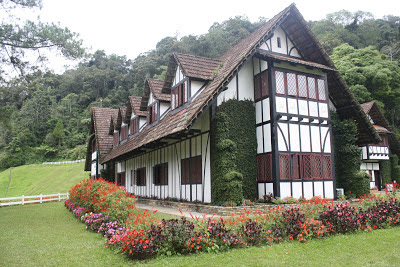The National Elephant Conservation Centre in Kuala Gandah was set up by the Department of Wildlife and National Parks in 1989 and is the centre for its Elephant Unit.
The Elephant Unit is tasked to locate, subdue and relocate elephants from areas in the peninsula where their habitats have been encroached by development. To avoid conflict between humans and the elephants, the elephants are moved to wilderness areas more suited for them to live in.
To assist in the task of re-locating wild elephants, the Elephant Unit has a number of trained resident elephants who assist in the task of calming and relocating the wild elephants. The Centre also has a number of orphan baby elephants who are looked after by the staff.
In addition to the translocation activities, the Centre also has a role in raising public awareness of the importance of the conservation of elephants and is open to the public and tourists.
Kuala Gandah is located in the hinterland in the centre of Peninsular Malaysia and it is only possible to get there by private transport. It is approximately 100km away by road from the city of Kuala Lumpur, and there are no buses or trains that go there.
If you are planning to drive there yourself, it is pretty easy to do and not complicated. From Kuala Lumpur you will have to take Route E8, which is more commonly known as the Karak Highway. This is a scenic highway that crosses the Titiwangsa range of mountains over into Pahang state, passing by the road up to Genting Highlands and the Berjaya Hills along the way.
Once over the dividing range at Karak, the highway becomes the East Coast Expressway or Lebuhraya Pantai Timur; a straight and flat highway that goes all the way to the coast on the eastern side of the peninsula. Follow the highway until you come to the exit to the small town of Lanchang. Take the exit and pay the toll.
Immediately after the toll booths, you will see this signboard:
Go on straight down the road until you come to a T-junction that looks like this:
Do not turn left, as this will take you to the small town of Lanchang. Instead turn right, following the brown coloured signboard indicating Kuala Gandah.
You will shortly see the above signboard on your left, indicating you are on the right track and that Kuala Gandah is 12km away.
After a few kilometres, you will come across an intersection to your left. This road will take you to Raub and Bentong. Ignore it and continue onwards.
You will be driving past small kampung (village) houses and man-made fishing ponds along the way. Several of the kampung houses have signs advertising "homestays".
Eventually you will reach another fork in the road after you see this signboard:
Going right will take you to Deerland, a small petting zoo. Instead continue onwards toward the Kuala Gandah Elephant Conservation Centre.
Eventually you will come to a small Orang Asli (aborigine) settlement and see this Gate and Guard House. This is the entrance to the Kuala Gandah Elephant Conservation Centre.
Drive in and park at the ample car park bays provided. The whole journey from Kuala Lumpur should not take you more than 1 hour and 30 minutes. As this is a government conservation centre and not a commercial enterprise, there are no entrance fees. However donations are always welcome.
Head towards the main administrative building in front. At the reception counter, you will be asked to sign a waiver form, which basically indemnifies the department against accidents should you chose to participate in any activity with the elephants. You will be given a sticker to paste on your shirt, which basically allows you to participate in the bathing with the elephants activity.
In the past, when you visited the Sanctuary, you could actually go riding on the elephants. You could actually also ride on the elephants into the river for the bathing activity. Due to complaints by animal rights groups, these as well as the elephant performance activities have since been abolished.
The routine nowadays follow a set schedule. If you arrive in the morning between 10:30 am to 12:00pm, all you can do is to observe the elephants roaming freely within their enclosure.
Most people would chose to arrive at 1pm. There is a video show which explains the objective of the Elephant Sanctuary which runs for about half-an-hour.
The shows run according to the following schedule:
Monday-Thursday : 1st Show (1pm) and 2nd Show (1:30pm)
Saturday,Sunday & Public Holidays: 1st Show (12:30pm),2nd Show (1pm) and 3rd Show (1:30pm)
After the show, you can walk at your leisure over the bridge across the river to the elephant grounds on the other side.
While waiting for the official activities to start at 2:15pm, you can actually buy peanuts, sugarcane or bananas at RM3 to feed the baby elephants who are lined up in pens.
At 2:15pm, the adult elephants are brought in. You can then watch the mahouts ride the elephants down into the adjacent river and bathe the elephants.
This is then followed by a short elephant conservation talk at the interpretive stage where you are introduced to each of the elephants and their background and abilities.
You are then given the opportunity to feed the adult elephants with some of their favourite fruits.
Finally, if the river level is not too high on the day of your visit and you have the yellow stickers, you can chose to bathe with the baby elephants in the river.
All in all, Kuala Gandah makes a good day trip out from Kuala Lumpur and can be easily combined with a trip to the nearby Deerland petting zoo.
National Elephant Conservation Centre (NECC)
Department of Wildlife and National Parks (DWNP/PERHILITAN)
Kuala Gandah, 28500 Lanchang
Pahang Darul Makmur
Tel: +609-2790391
Fax: +609-2790398

























































